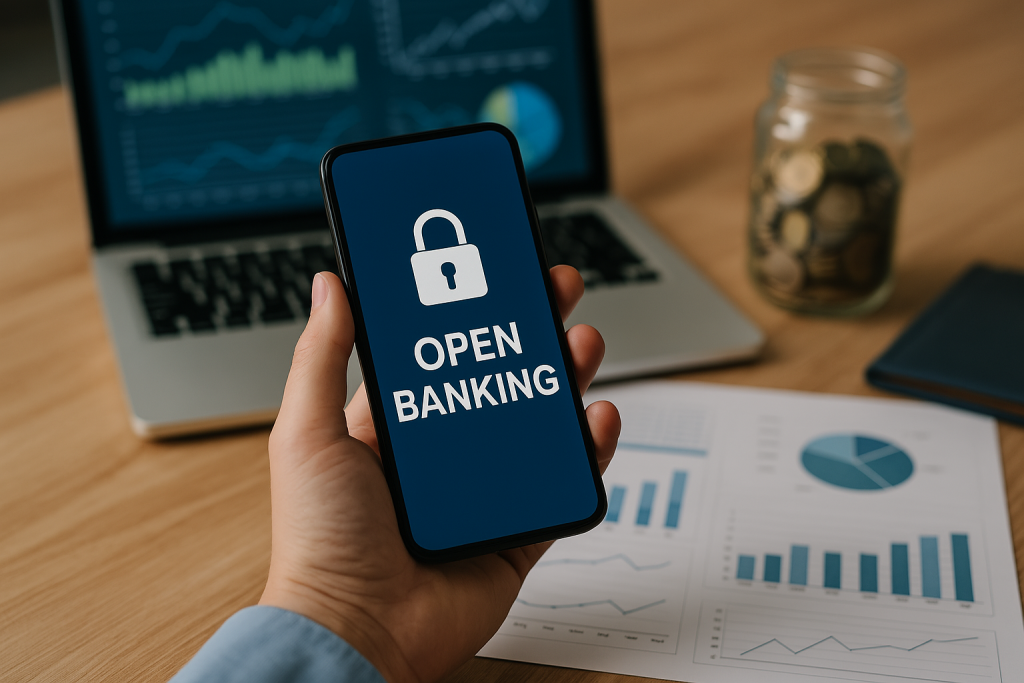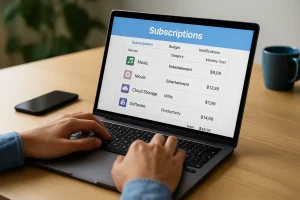In recent years, the way we interact with money has changed dramatically. A big part of this shift comes from open banking, a system that puts people back in control of their financial data. Instead of banks holding all the cards, consumers now have the chance to use smarter tools and get personalized services based on how they actually use their money.
But what does this really mean for you? Whether it’s getting approved for credit faster or using an app that understands your budget better than you do, open banking is shaking up how finances are managed. It’s all about giving you more say, more insight, and better options tailored to your financial life.
What is open banking and how does it work?

At its heart, open banking is about sharing your financial data—but only when you want to, and only with companies you trust. Through secure technology called APIs, banks allow approved third-party apps to access information like your transaction history. It’s all done with your consent, and you’re free to stop sharing whenever you want.
Why would you do that? Because those apps can help you see patterns in your spending, suggest ways to save, or even offer better loan deals. You’re not just a customer anymore—you’re the one in charge, deciding who gets to use your data and for what purpose.
Taking back financial control
Before open banking, your financial story was locked behind your bank’s walls. Now, with your permission, budgeting apps, credit platforms, and investment tools can work with that data to build services that actually fit your needs. It’s a shift from one-size-fits-all banking to experiences that feel tailor-made.
It also pushes banks to innovate. With fintechs entering the space, there’s more pressure on traditional institutions to improve what they offer. That means better apps, faster support, and smarter tools—for everyone, not just those with high balances.
Key benefits of open banking for consumers
The biggest win with open banking is freedom. You can manage your money across multiple banks, track everything in one place, and get advice that’s based on real habits—not just guesses. It’s a more connected, practical way to handle your finances.
| Benefit | What it Means for You |
|---|---|
| Personalized Financial Advice | Get insights that actually reflect your lifestyle |
| Easier Credit Approval | Lenders see the full picture, not just your credit score |
| Budgeting & Spending Insights | Understand where your money’s going, every month |
| Streamlined Account Aggregation | View all your accounts without switching apps constantly |
And there’s more than just convenience. This system creates space for services that understand your financial goals, whether you’re trying to save for something big or simply avoid overdraft fees. Instead of reacting to problems, you’re able to plan ahead and stay in control.
Plus, the more you use these tools, the smarter they get. Many apps learn from your patterns and adjust their suggestions over time. It’s like having a financial assistant in your pocket—without the hefty price tag.
Smarter budgeting and money management
With open banking, budgeting apps don’t just show you numbers—they help you make sense of them. They pull data from different accounts to give you a full picture of your income and expenses. That way, you can spot trouble areas, cut unnecessary spending, and actually stick to your savings goals.
These apps also offer tips based on your habits. Maybe you’re spending more than usual on food delivery, or your subscriptions are piling up. Instead of guessing, you’ll get alerts and suggestions you can act on right away.
Easier access to loans and credit
Applying for a loan used to be a bit of a black box. You’d fill out forms, wait, and maybe get rejected without really knowing why. Open banking changes that by letting lenders look at your actual financial behavior, not just a credit score.
This is especially helpful if you’re self-employed, a freelancer, or someone with income that doesn’t follow a traditional pattern. Lenders can see your full history—how regularly you get paid, how you manage expenses—which often leads to faster approvals and better terms.
How open banking supports financial inclusion
One of the best things about open banking is how it helps people who’ve been left out of the traditional banking world. That includes folks without credit history, people in rural areas, or anyone who hasn’t used banks much in the past. Now, there’s a new way in.
It’s not just about having a bank account anymore. It’s about having access to tools, advice, and credit that work for your real situation. With open banking, even someone who’s never had a credit card can start building a financial profile using things like rent or utility payments.
Data safety, consent, and control
Naturally, sharing financial data raises questions about security. But open banking is built with that in mind. It uses strict regulations, encryption, and clear user permissions. You’re always in control of what’s shared, and with whom.
Banks and apps involved in open banking are audited regularly and follow strict rules. And most importantly—you can revoke access anytime. If you change your mind, your data is off-limits. That puts the power squarely in your hands.
Know what you’re agreeing to
Before sharing anything, you’ll see exactly what an app is asking to access. Reputable platforms lay it all out clearly, no fine print tricks. That way, you’re never in the dark about what’s happening with your information.
If you stop using a service, your connection to that provider is cut off. You don’t need to worry about lingering data. Everything is based on consent, and you can update or cancel that consent whenever you want.
How to get the most out of open banking
To really make open banking work for you, it’s all about picking the right tools. Some apps are better at budgeting, others are great for tracking credit or investments. The key is finding something that fits your lifestyle and helps with your actual goals.
Start by asking yourself what you need: Are you trying to pay off debt? Save more each month? Understand your spending better? Once you’ve got that answer, you can look for platforms that are trusted, easy to use, and focused on what matters to you.
What’s next for open banking?
Technology keeps pushing things forward, and open banking is no different. As more people use it, the services keep getting better. We’re starting to see apps that predict bills before they arrive, recommend investments, or adjust budgets automatically based on your behavior.
New tech like AI and blockchain are likely to make things even more secure and personalized. In a few years, managing money could feel less like a chore and more like something you actually enjoy. That’s the future open banking is aiming for.



